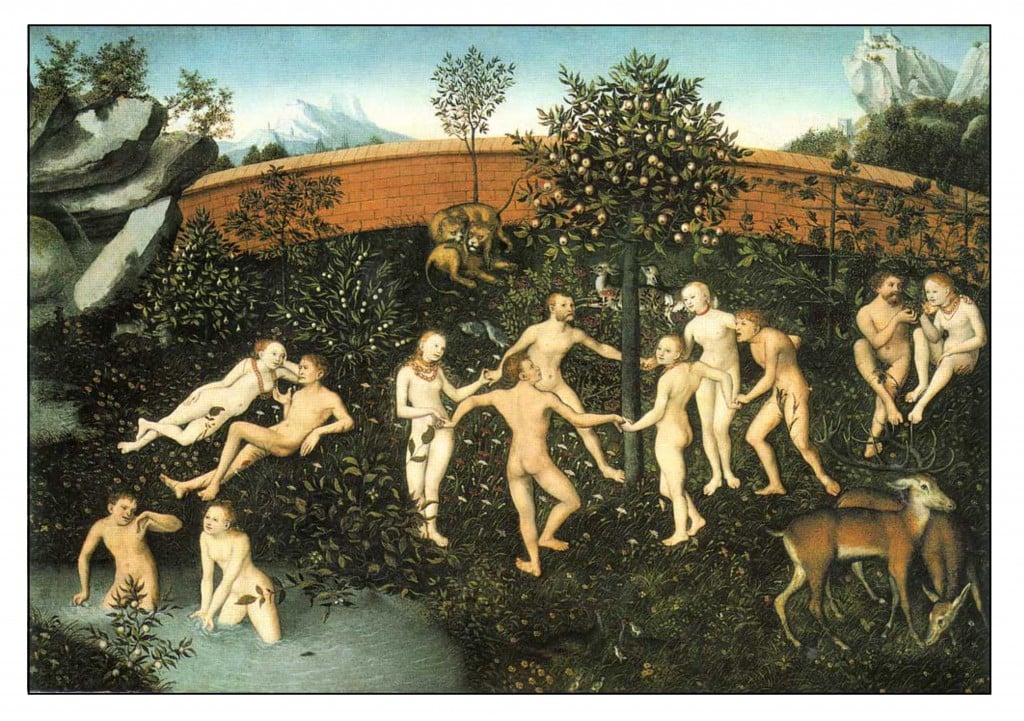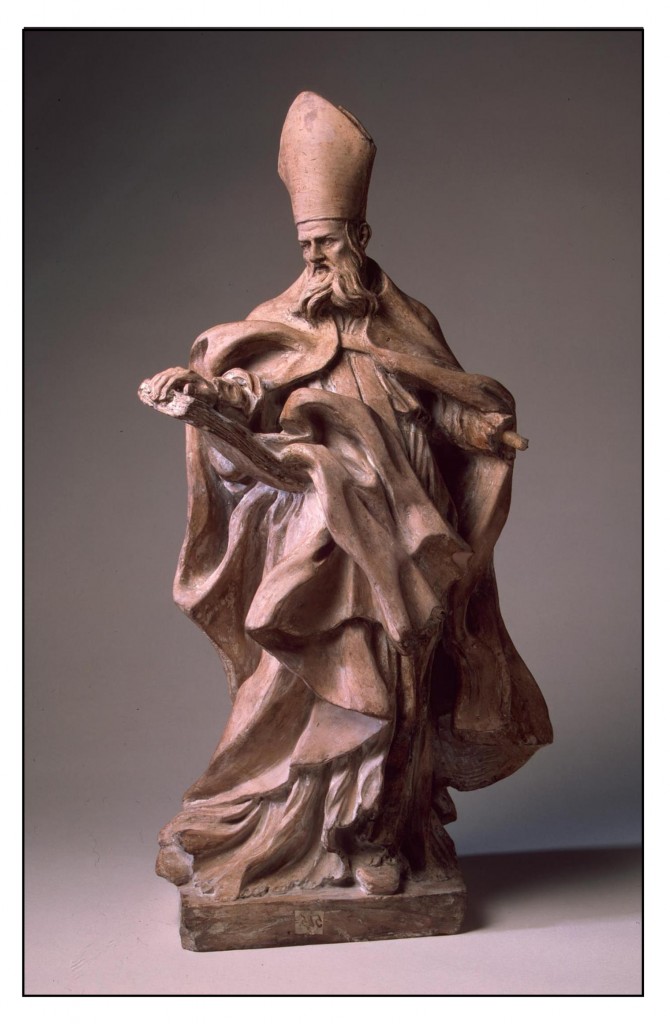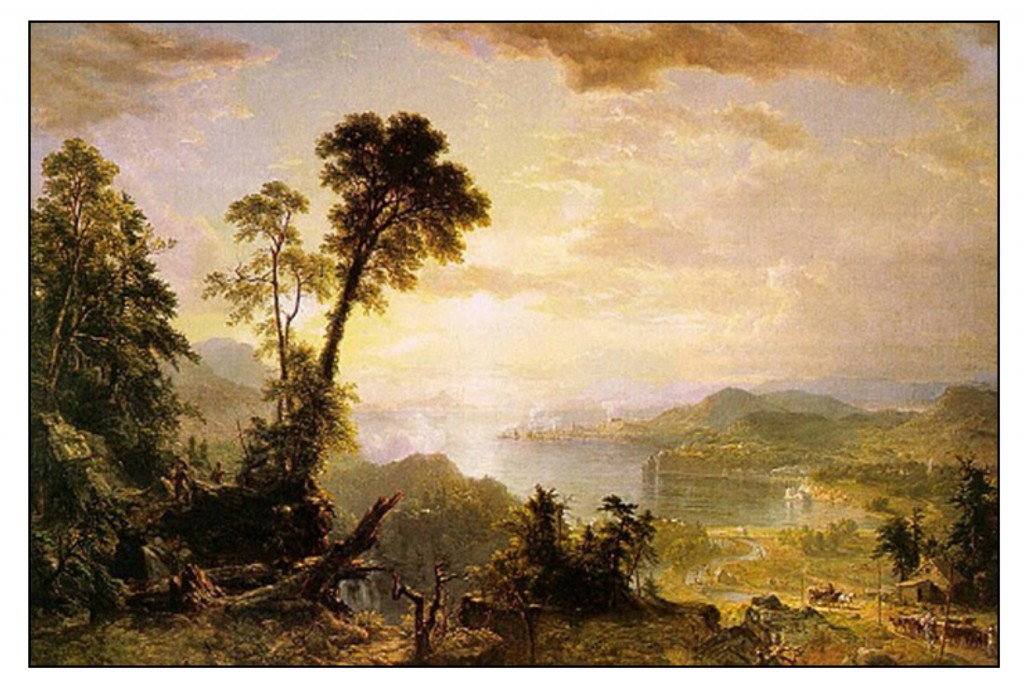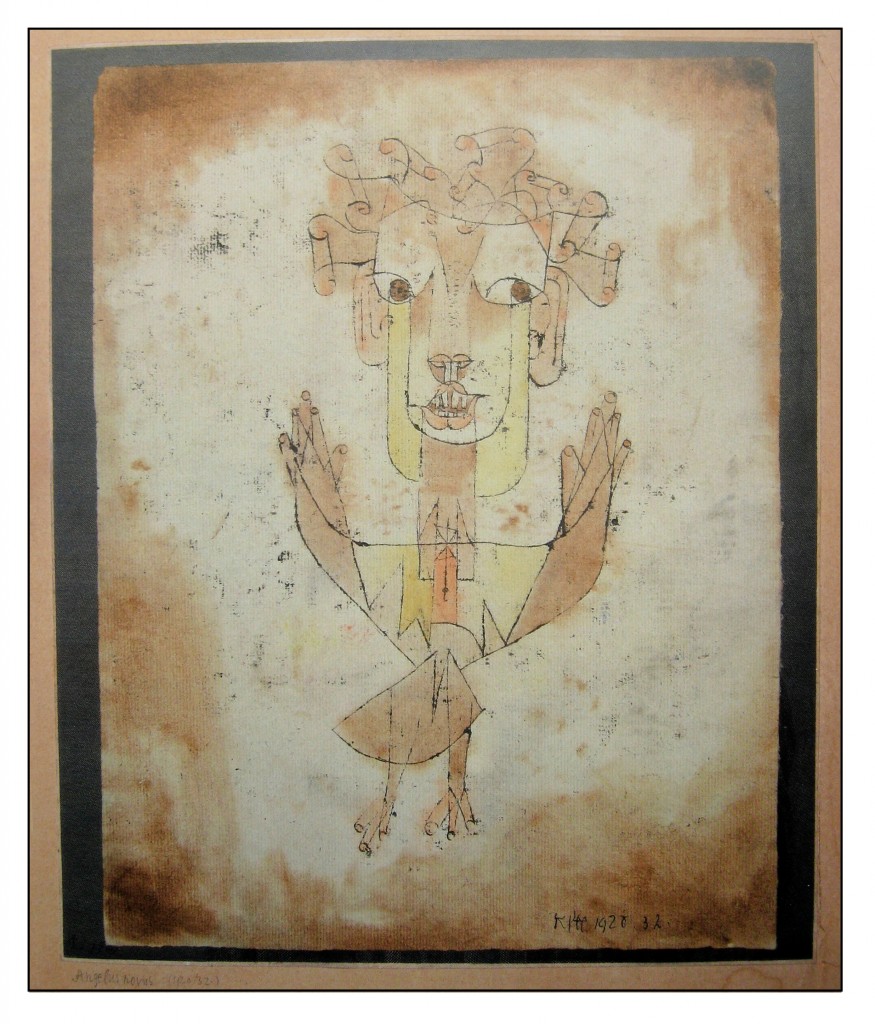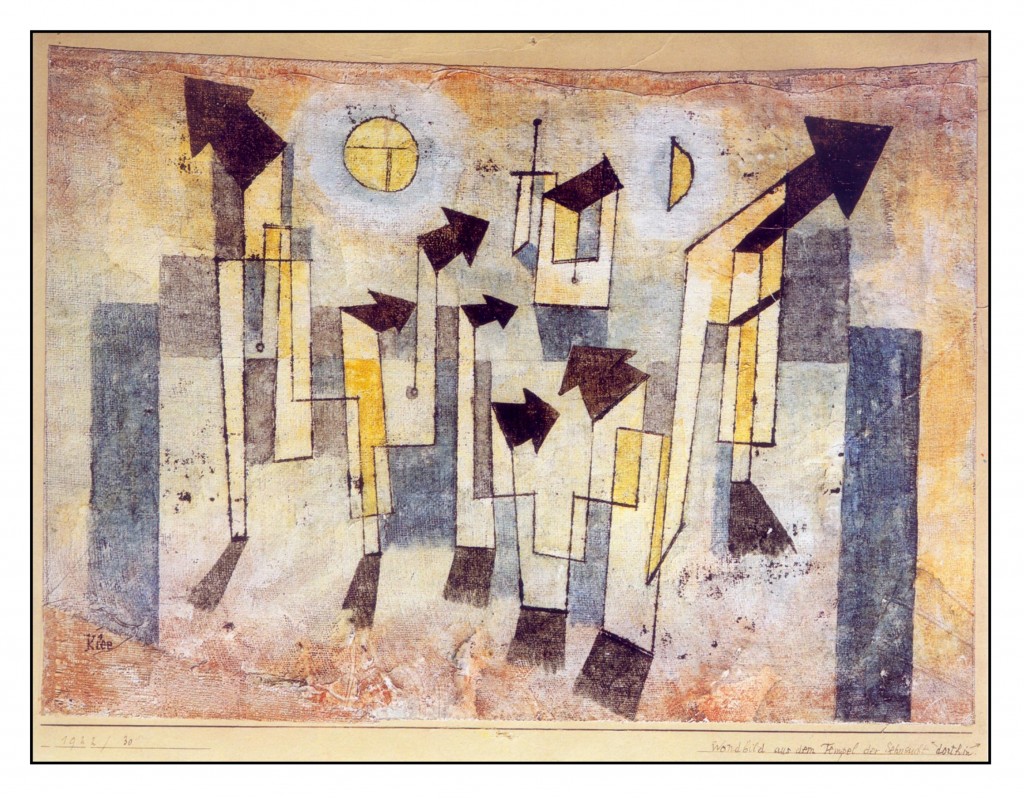Knowledge of Good and Evil
According to the book of Genesis, Yahweh created Adam and Eve to live in the Garden of Eden. He commanded them on pain of death not to eat the fruit of the Tree of Knowledge of Good and Evil. However, Eve was convinced by the Serpent to eat of the tree, and she in turn convinced Adam to do the same. For their disobedience, Adam and Eve were expelled from Eden. The interpretation of this myth has led to the Christian idea that humanity is forever tainted by “Original Sin,” and that our only hope for immortality is through the sacrifice of Christ which offers redemption from sin and entry into eternity to those who believe in him. The concept of Original Sin has become dangerously ingrained in Christian thinking, and needs reworking,
The Tree of the Knowledge of Good and Evil
The book of Genesis contains two narratives of the creation. In the second (Genesis 2:4-25), attributed to a writer/editor called J (Rosenberg & Bloom, 1990), Yahweh created Adam by breathing into a lump of earth, and placed him in a garden in Eden. He then grew the trees of the garden:
And out of the ground made the Lord God to grow every tree that is pleasant to the sight, and good for food; the tree of life also in the midst of the garden, and the tree of knowledge of good and evil. (Genesis 2: 9)
Yahweh enjoined Adam not to eat of the Tree of Knowledge of Good and Evil:
And the Lord God commanded the man, saying, Of every tree of the garden thou mayest freely eat
But of the tree of the knowledge of good and evil, thou shalt not eat of it: for in the day that thou eatest thereof thou shalt surely die. (Genesis 2: 16-17)
J then tells how God created Eve as a companion for Adam, and narrates the story of man’s fall from innocence (Genesis 3: 1-24). Eve was asked by the Serpent whether she and Adam must not eat from any of the trees of Eden:
And the woman said unto the serpent, We may eat of the fruit of the trees of the garden:
But of the fruit of the tree which is in the midst of the garden, God hath said, Ye shall not eat of it, neither shall ye touch it, lest ye die. (Genesis 3: 2-3)
The Serpent convinces her that eating of the Tree of Knowledge would actually open her eyes to the divine knowledge of good and evil. The interaction between Eve and the Serpent is the subject of many paintings, among which is the tempera painting of William Blake (1800) in the Victoria and Albert Museum. This and the subsequent illustrations are derived from the Blake Archive:
Eve ate the fruit and gave some to Adam who likewise ate. Yahweh quickly realized how Adam and Eve had disobeyed him.
And the Lord God said, Behold, the man is become as one of us, to know good and evil: and now, lest he put forth his hand, and take also of the tree of life, and eat, and live for ever
Therefore the Lord God sent him forth from the garden of Eden, to till the ground from whence he was taken.
So he drove out the man; and he placed at the east of the garden of Eden Cherubims, and a flaming sword which turned every way, to keep the way of the tree of life. (Genesis 3: 22-24)
The expulsion of Adam and Eve from Eden is depicted in an 1808 watercolor by William Blake which was to illustrate the ending of Milton’s Paradise Lost (1674). In this telling of the story, the archangel Michael leads Adam and Eve out of Paradise:
For now, too nigh
The Arch-Angel stood; and, from the other hill
To their fixed station, all in bright array
The Cherubim descended; on the ground
Gliding meteorous, as evening-mist
Risen from a river o’er the marish glides,
And gathers ground fast at the labourer’s heel
Homeward returning. High in front advanced,
The brandished sword of God before them blazed,
Fierce as a comet; which with torrid heat,
And vapour as the Libyan air adust,
Began to parch that temperate clime; whereat
In either hand the hastening Angel caught
Our lingering parents, and to the eastern gate
Led them direct, and down the cliff as fast
To the subjected plain; then disappeared.
They, looking back, all the eastern side beheld
Of Paradise, so late their happy seat,
Waved over by that flaming brand; the gate
With dreadful faces thronged, and fiery arms:
Some natural tears they dropt, but wiped them soon;
The world was all before them, where to choose
Their place of rest, and Providence their guide:
They, hand in hand, with wandering steps and slow,
Through Eden took their solitary way.
Though Milton’s words portray the gravity of what has happened to Adam and Eve, they are also touched with hope. They had each other; their eyes were open; they could learn to survive; perhaps they might even thrive. The world was all before them.
The story of Adam and Eve and how they disobeyed Yahweh’s commandment not to eat the fruit of the Tree of Knowledge of Good and Evil has been retold again and again in the years since it was first written down in Judeo-Christian scripture (Greenblatt, 2017). In the Christian world it led to the idea of “Original Sin” (Boyce, 2015): because of the transgression of Adam and Eve, all human beings are doomed to die, unless they accept Christ as their savior.
One or Two Trees?
Yahweh’s prohibition and Eve’s words to the Serpent suggest that there is only one special tree in the garden: the Tree of Knowledge of Good and Evil. One is therefore tempted to re-examine the first mention of the two trees. The conjunction between them may be translated both as “and” and as “that is to say”. Thus, the Tree of Life, may just be another name for the Tree of Knowledge of Good and Evil, and Genesis 2:9 might read
the tree of life also in the midst of the garden, that is to say, the tree of knowledge of good and evil.
However, when Yahweh condemned Adam and Eve for their transgression, he did so lest they also partake of the Tree of Life and become immortal. Those supporting the existence of only one special tree in Eden have suggested that perhaps the word translated as “also” might actually mean “again.” The issues about one or two trees have been discussed by Makowiecki (2021) and Zevelt (2013, Chapter 7).
My preferred interpretation is that there is only one special tree, that eating of that tree opens the mind to knowledge, and that, if our knowledge becomes great enough, we might somehow become immortal.
Good and Evil
The phrase “good and evil” needs two important explications. The first is that it is an example of a merism, “a figure of speech in which opposite extremes imply everything between them” (Robinson, 2024, p 77). When we say that we searched “high and low” we mean that we searched everywhere. The Bible makes frequent use of the device: the expression “heavens and the earth” (Genesis 1:1) includes everything between; “evening and morning” (Genesis 1:5) means the whole day (including afternoon and night); “alpha and omega” (Revelations 22: 13) means the complete alphabet of existence. Thus, the tree of knowledge of good and evil is the tree of all knowledge characterized by the extremes of good and evil.
The second point of explication concerns the word translated as “evil.” The original Hebrew word can mean both “bad” and “evil” (Kass, 2003, p 63, see also Speiser, 1964, and Rosenberg & Bloom, 1990). Both are value judgements. However, we often conceive of “evil” as pain and suffering that is intentionally rather than naturally caused. Thus, though murder is considered evil, an earthquake is not. However, this distinction becomes fuzzy if we believe the natural world to be controlled by divine intentions. Arnold (2008, p 64) points out that God created both good and evil. In the words of God proclaimed through his prophet Isaiah:
I form the light, and create darkness: I make peace, and create evil: I the Lord do all these things. (Isaiah, 45: 7)
According to our definitions of “evil” and “bad,” knowledge of good and bad could then refer to everything, whereas knowledge of good and evil is primarily concerned with moral judgements (Hartmann, 2002, Chapter V; Laird, 2014, Chapter V). I much prefer to interpret the story of Eden in the latter sense. A moral judgement combines an assessment of what we perceive with a decision about what we should do in the light of the predicted consequences. Morality requires a consciousness of a self that can control one’s actions, or in religious terms, a soul that has free will. The very act of disobeying is an exercise of such free will.
When the eyes or Adam and Eve were opened by the knowledge of good and evil, the first thing that they noted was their shame at being naked. This combines self-consciousness with the idea that one should not unnecessarily incite the lust of others.
Kass (2004, p 68) sums up his discussion of the Tree of Knowledge of Good and Bad:
The knowledge prohibited is autonomous knowledge of how to live, found in or procured from one’s own garden (nature), based on human experience of the visible world. The opposite of obedience, it is the kind of knowledge that is implicit in the act of violating a prohibition, indeed, in any act of choosing for oneself.
He goes on to say that this knowledge may not be sufficient for us to behave as we should. We also require rules such as the Ten Commandments to instruct us how to live:
But this autonomous knowledge of good and bad is not true knowledge of good and bad; human beings on their own will not find true knowledge of how to live. This must be supplied by what is later called revelation.
I find myself agreeing with his initial statements and disagreeing with those that follow. The commandments were not miraculously revealed to us by Moses: that story is as mythical as the story of Eden. Rather these rules were proposed on the basis of how human beings had learned to live with each other.
Original Sin
Though it is not directly discussed in the Bible, Talmudic and Christian interpretations of the disobedience of Adam and Eve led to the idea that all their descendants were afflicted with their Original Sin and that this explains our mortality and our suffering (Boyce, 2015; Greenblatt, 2017, Chapters 5 and 6; Zevit, 2013, Chapter 1). The apostle Paul wrote
Wherefore, as by one man sin entered into the world, and death by sin; and so death passed upon all men, for that all have sinned (Romans 5: 12)
Paul proclaimed that Christ died to save us from this fate, and that belief in him can lead to eternal life. Augustine of Hippo (354-430 CE) was the great champion of Original Sin. He argued against the teachings of an English theologian Pelagius (354-413 CE), who proposed that human beings are not born innately sinful, but rather free to choose between good and evil:
Day by day, hour by hour, we have to reach decisions; and in each decision, we can choose good or evil. The freedom to choose makes us like God: if we choose evil, that freedom becomes a curse; if we choose good, it becomes our greatest blessing.
When Adam and Eve ate from the tree of knowledge they were exercising their freedom of choice … Before eating the fruit they did not know the difference between good and evil; thus they did not possess the knowledge which enables human beings to exercise freedom of choice. By eating the fruit they acquired this knowledge, and from that moment onwards they were free. Thus the story of their banishment from Eden is in truth the story of how the human race gained its freedom: by eating fruit from the tree of knowledge, Adam and Eve became mature human beings, responsible to God for their actions. (both quotations from Pelagius are in Boyce, 2015, p 15)
The story of Eden can thus be interpreted as Adam and Eve deciding not to remain in blissful innocence. They could have stayed in the garden, obeyed Yahweh’s commandment and led a life of simplicity and comfort. Instead, by eating of the tree of knowledge they gained insight into the complexities of a life independent of Yahweh’s care, a life wherein they made their own decisions rather than just accepting what Yahweh commanded. Their act of disobedience was an assertion of their freedom.
However, Augustine prevailed over Pelagius. At the Synod of Carthage (418CE), Original Sin became one of the essential doctrines of the Christian Church (Denzinger, 2012, p 223). This was unfortunate. Thinking of humanity as being free to choose, as being able to learn to do what is good, is far more productive than simply considering humanity as doomed to die.
Freedom to Choose
The story of Adam and Eve is not a realistic story of human origins. However, myths often contain true ideas about human nature. During our evolution, human beings gained a special kind of knowledge. We became conscious of ourselves as beings able to decide freely among possible actions on the basis of the good or evil these actions might entail. We also learned that with freedom comes responsibility. We must not act just for our own good for also for the good of others.
On this note I would like to conclude with a third image from the work of William Blake: Rose Albion (1795). We do not know exactly what Blake was depicting. A common interpretation is that the image represents man (or more specifically, England) freed from the shackles of materialism. It might also represent the more general idea of humanity as free to choose.
References
Alter, Robert. (2004). The five books of Moses: a translation with commentary. W.W. Norton & Co.
Arnold, B. T. (2009). Genesis. Cambridge University Press (The New Cambridge Bible Commentary).
Boyce, J. (2015). Born bad: original sin and the making of the Western world. Counterpoint Press.
Denzinger, H. (2012). Compendium of creeds, definitions, and declarations on matters of faith and morals (P. Hünermann, H. Hoping, R. L. Fastiggi, & A. E. Nash, Eds.; 43rd ed.). Ignatius Press.
Greenblatt, S. (2017). The rise and fall of Adam and Eve. W.W. Norton & Company.
Hartmann, N. (1932, reprinted 2002) Moral Phenomena. Transaction Publishers.
Kass, Leon. (2003). The beginning of wisdom: reading Genesis. Free Press.
Laird, J. (2014). A study in moral theory. Routledge.
Makowiecki, M. (2021). Untangled branches: the Edenic tree(s) and the multivocal WAW. Journal of Theological Studies, 71(2), 441–457.
Robinson, M. (2024). Reading Genesis. Farrar, Straus and Giroux.
Rosenberg, J., & Bloom, H. (1990). The book of J. Grove Weidenfeld.
Speiser, E. A. (1964). Genesis: introduction, translation, and notes. Doubleday (Anchor Bible).
Zevit, Z. (2013). What really happened in the Garden of Eden? Yale University Press.



